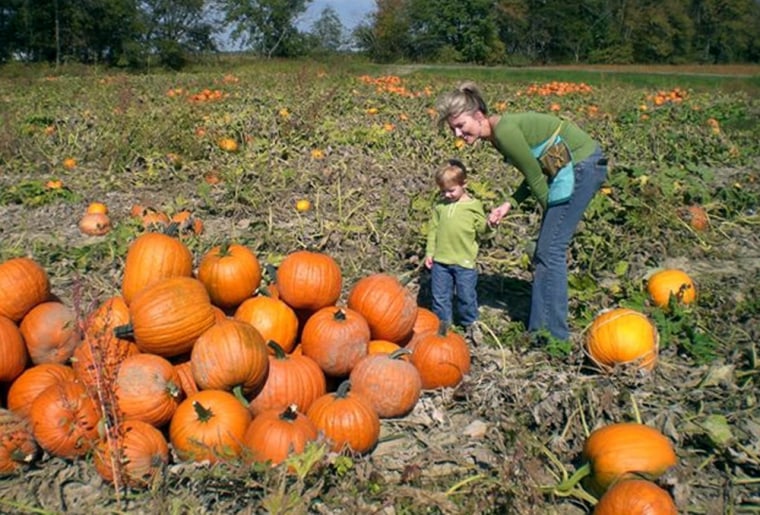The harvest is pretty much over now, and Sarah Frey Talley has empty pumpkin fields as far as the eye can see.
She was a teenager when she started selling pumpkins to local stores from a small Illinois farm where she grew up. Now, at age 30, she heads Frey Farms, the largest pumpkin patch in the country.
“We are the people who bring pumpkins to Halloween,” she said from her farm office in Keenes, Ill., as tractor-trailers haul 2,000 pumpkins per load onto Interstate 57, bound for Chicago and other urban markets.
Frey Farms supplies Wal-Mart Stores Inc., Kroger Co., Meijer Inc. and other retailers with more than 1 million pumpkins a year.
Selling pumpkins to be carved into lanterns and other designs for Halloween is bread and butter for pumpkin growers, but the business has grown to include pumpkins and gourds for lawn and table decorations throughout fall and winter.
“You used to buy a pumpkin if you had kids. You carved it and that was it,” said Dan Egel, plant pathologist at Purdue University. “Increasingly they are grown just for decoration. People want to put them out with cornstalks in the front yard.”
U.S. pumpkin farming grew to 44,700 acres in 2005 from 34,800 acres in 2000 and sales have grown to nearly $106 million last year from with $81 million two years ago.
At Frey Farms, Talley works with her four brothers, and in some of its literature Wal-Mart presents it as a family farm.
In fact it is a huge operation with thousands of acres of pumpkins, cantaloupes, and watermelons under cultivation. It does not disclose annual sales, but Talley said pumpkin sales are “a multimillion-dollar commodity for our company.”
While activists have criticized Wal-Mart for squeezing prices paid to suppliers and sending production abroad, Frey Farms has built a successful relationship with Wal-Mart over the last 11 years.
“We’ve been fortunate enough to grow our company alongside their company,” said Talley.
The weight of pumpkins relative their price helps keep production close to home, and Illinois is well suited to growing them. It harvested 12,900 acres last year, with Pennsylvania the No. 2 state at 7,500 acres.
This year Talley and other Illinois growers harvested a healthy crop, which will make up for the smaller ones in the Northeast and in Ohio and Indiana, where rain and disease hurt the plants.
“We have actually shipped many pumpkins from the Midwest to cover the needs of the Northeast,” Talley said. “Never in the 12 years that we have been doing this have we ever told a customer no.”
Morton, Ill., claims the unofficial title of Pumpkin Capital of the World, because of nearby processing plants that make much of Illinois pumpkin output into pie filling and baked goods.
The state’s two plants account for about 95 percent of the processed pumpkin markets in the United States, said Jeff Squibb, spokesman for the Illinois Department of Agriculture.
Pumpkins have been produced in the United States for centuries, and native Americans taught the earliest settlers how to grow them.
It was Irish who brought the tradition of the jack-o'-lantern, a lantern carved from a vegetable, to the United States.
According to one version of its origin, a stingy drunk named Jack tricked the Devil into agreeing never to claim his soul. When Jack died, the Devil duly refused him entrance into Hell and gave him a lit coal to travel the afterlife. Jack put the coal in a turnip to light his way and became known as Jack of the Lantern.
For Frey Farms, the jack-o'-lantern is good business. In addition to selling a million carving pumpkins, her company created and sells painted pumpkins, as well as kits to make jack-o'-lanterns and other pumpkin-related decorations.
“This is my favorite time of year. This is the thing that I am most passionate about,” Talley said.
